
185 Palestinians have been killed, thousands injured, and nearly 1,000 homes destroyed in the last week in Gaza by Israeli airstrikes (underwritten by American tax dollars). My last post about the dangers of Sikh alliances with pro-Israel groups has sparked some important and much needed discussion and debate in our community about this issue.
Many people I talk to (Sikh and non-Sikh alike) explain they feel like they do not know enough about the situation to take a stance or get involved. Or they feel overwhelmed about the complicated history of the conflict. If this sounds like you or anyone you know (or you just want a history refresher), check out this short video put out by Jewish Voice for Peace.Â
And if you don’t understand why this is a Sikh issue, see here, here, or here for more about that.
Guest blogged by Shahe Kaur
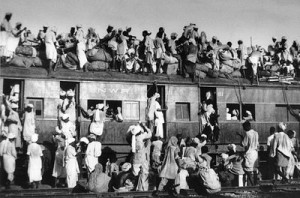 On the eve of India’s Independence Day, it is difficult to not think about the haunting stories I have heard from my parents, grandparents, and others who lived through the horrific partition of India into azaad (independent or free) India and Pakistan. This partition uprooted over 10 million people and resulted in murders and brutality far too numerous to count with official accuracy, with estimates ranging from a few hundred thousand to a few million.  Many of us will likely never truly understand how much our elders are haunted by the memories of forced migration, murder, and the other atrocities that occurred when they had to uproot to the newly independent India.
On the eve of India’s Independence Day, it is difficult to not think about the haunting stories I have heard from my parents, grandparents, and others who lived through the horrific partition of India into azaad (independent or free) India and Pakistan. This partition uprooted over 10 million people and resulted in murders and brutality far too numerous to count with official accuracy, with estimates ranging from a few hundred thousand to a few million.  Many of us will likely never truly understand how much our elders are haunted by the memories of forced migration, murder, and the other atrocities that occurred when they had to uproot to the newly independent India.
As a child and throughout the time I spent with my grandmother,  I was very interested in the history of who I was and where our family came from. However, when it came to topics like partition or the atrocities that occurred in 1984, my family, particularly my grandmother did not want to talk about it. The memories were far too painful for my grandmother to ever completely tell me her story. “ Those days have passed, let them be,†was the common response that I got. Of course the vakeel (lawyer) in me, even as a child, could just not let things be. I had to know more about who we were as a family and the history that is part of the fabric of who I am today. As I pushed and pushed for more details regarding my grandmother’s journey, I began to piece together an image of the atrocities she witnessed and endured to become the woman that I knew. As she would tell me her story, each time proclaiming she had told me the same story a hundred times before, I probed more and more to gain more of her experience and account of what she had endured. Eventually she told me all that she cared to speak of, which was enough for me to get a glimpse of how deep her courage, strength, and love for her family truly was.
Many of us Sikhs and other South Asians in the diaspora have grown up with subtle and not so subtle messages of anti-black racism from our families and communities at large. While on the one hand we learn through Sikhi that all people are equal regardless of their race, caste, or gender, we simultaneously learn that we should not socialize with black people and certainly not date them. We learn they are not to be trusted, that we should keep our distance. We learn that they are unattractive and that we most certainly want to keep our (brown) skin as wheatish and fair and lovely as possible or else we might be called kala (which my Nana Ji used to jokingly call me, as I was the darkest in my family). I recall a family member bluntly telling me when I was a kid, “You can marry whoever you want when you grow up as long as she is not black.”
In his groundbreaking 2001 book Everybody was Kung Fu Fighting, Vijay Prashad explains the anti-black racism so pervasive in our ![]() communities:
communities:
But all people of color do not feel that their struggle is a shared one. Some of my South Asian bretheren…feel that we should take care of our own and now worry about the woes of others, that we should earn as much money as possible, slide under the radar of racism, and care only about the prospects of our own children…
Since blackness is reviled in the United States, why would an immigrant, of whatever skin color, want to associate with those who are racially oppressed, particularly when the transit into the United States promises the dream of gold and glory? The immigrant seeks a form of vertical assimilation, to climb from the lowest, darkest echelon on the stepladder of tyranny into the brightness of whiteness.
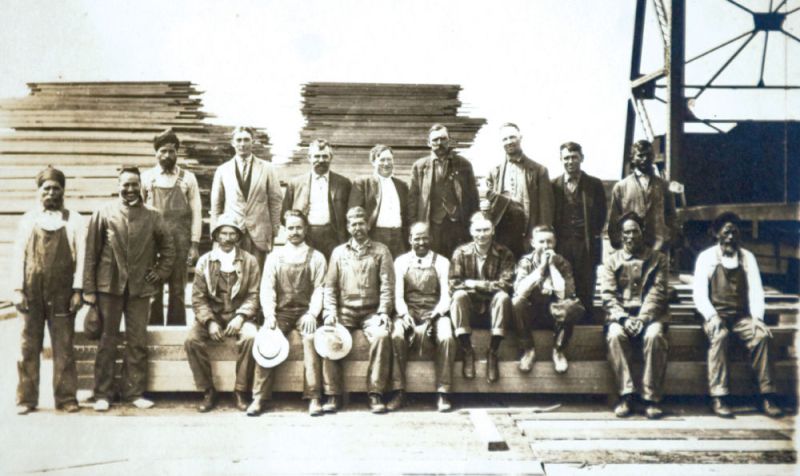
“Indians, many of whom were Sikh, worked at the Hammond Mill before its demise in 1922. During that time period, the Indians left their mark on Astoria, participating in wrestling matches, occupying Alderbrook also known as “Hindu Alley,” and forming the Ghadar political party. Courtesy of Clatsop County Historical Society.” (source: The Daily Astorian)
One of the legacies of the earliest Sikh and Indian immigrants to the United States at the turn of the twentieth century was the creation of the Ghadar Party, a political movement based in northern California that sought to promote India’s liberation from British rule.
Led by Indian expatriates in the United States, the Ghadar Party was formed in 1913. One of its main activities was the publishing of literature to promote resistance to British rule and for a free India. Obviously a threat to the ruling class, the literature was banned in India, and upon their capture, the Ghadarites were often imprisoned or executed as terrorists by the British.
This year, the San Francisco headquarters of the Ghadar Party has been opened to the public by the Indian Consulate as a museum. The printing press that the Ghadar Party used to print their literature is also now on display at the Gurdwara in Stockton, California. However, while it was previously believed that the Ghadar Party was founded in California, historians now place the genesis of the movement further north in the state of Oregon, where Johanna Ogden recently mapped a forgotten (and primarily) Sikh settlement of laborers in 1910 known as “Hindu Alley”.
While many people often confuse Vaisakhi as the beginning of the new year, today is the actual Sikh New Year.  It is the first day of the Nanakshahi Calender and Chet is the first month.  Today is also Sikh Environment Day, a campaign initiated by Eco Sikh and its volunteers throughout the globe and celebrated on the Gurgadi of Guru Har Rai Ji.
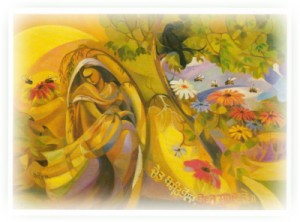
“Chet” from Barah Maha Calender
What will your new year’s resolutions be? Â What Sikh ideals will you plant today and seek growth of throughout the year?
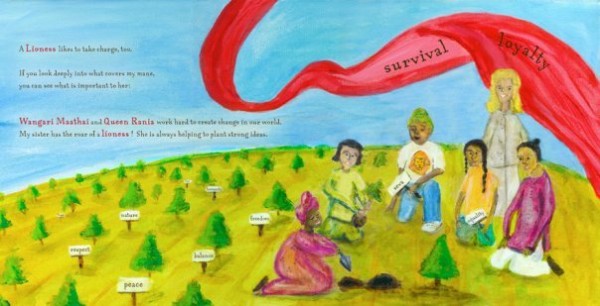
Image from “A Lion’s Mane”
Barah Maha Calender via Sikh Foundation
A Lion’s Mane by Navjot Kaur via Saffron Press
Co-blogged by Sundari and The Sikh Love Stories Project
Each year, International Women’s Day is celebrated to honor women’s economic, political and social achievements. As individuals around the world celebrate this day – in both big ways and small – I am left to consider how we can work to honor the achievements of Sikh women not only today but on an ongoing basis.  Sikh women have contributed in such meaningful ways, and yet much of that dialogue is often missing from our history.
In this post, we will be sharing some images with you and discuss various ways Sikh women have been witness to and engaged in our history both locally and globally.  We know this post will not be comprehensive – there is much to unearth about Sikh women’s contributions – but we hope it’s a starting point that will encourage us to keep this valuable history in our minds. Many of the following images each depict a different element of Sikh women in history.
Stories often begin with immigration and this first image shows Sikh women pioneers in Canada who were part of an immigrant labor force recruited in the early years of the twentieth century.
Mill Town Pioneers. Most of Canada’s early Sikh immigrants found work in lumber mills throughout the Pacific Northwest.
Canada’s largest mill community, Fraser Mills in New Westminster, BC, had between 200 and 300 Sikhs living and working there in 1925.
In this photograph from that period, three Sikh women stand in front of company houses at the mill. [link]
One of them wears a traditional embroidered shawl called ‘phulkari’. The phulkari played an important role in the lifecycle rituals of women in Punjabi villages at times of birth, marriage and death.
Most of us are probably familiar with the history of the first wave of Punjabi migration to California in the late 1800s and early 1900s.  These pioneers, many Sikhs, set up the country’s first gurdwara in Stockton, formed the Ghadhar Party to overthrow the British Raj, and many ended up marrying Mexican women. I learned about this fascinating history way later than I should have, but have noticed more and more consciousness of these early migrants and their descendants over the last several years.
These pioneers, many Sikhs, set up the country’s first gurdwara in Stockton, formed the Ghadhar Party to overthrow the British Raj, and many ended up marrying Mexican women. I learned about this fascinating history way later than I should have, but have noticed more and more consciousness of these early migrants and their descendants over the last several years.
A book that just came out unearths a lessor known history of early South Asian migration to the United States. A few decades after this Punjabi migration to California came a smaller, but no less interesting wave of South Asian immigration (Bengalis) to the east coast.  This little-known history is documented in a new book by Vivek Bald called Bengali Harlem and the Lost Histories of South Asian America. Like their Punjabi predecessors in California, these mostly Muslim migrants were working class, dealt with a great deal of racism, and married women from other communities of color and immigrant communities.
Bald, also a filmmaker (who made an amazing film about the British Asian underground music movement of the 1990s called Mutiny: Asians Storm British Music), is also working on a documentary version of the book entitled In Search of Bengali Harlem, which you can preview here.
I haven’t yet read the book but am really looking forward to checking it out. As you’ll see from the blurb below, these stories have much in common with those of the early Punjabi migrants, even if they were working in different industries and came from different parts of South Asia.
As a community, we have an incredibly rich history and yet we often know so little about it. The first time I learned about the Sikligar community was after watching Mandeep Sethi’s documentary at a local film festival, about this community of Sikhs known to be the weapon makers of the Khalsa army. Unfortunately, very little is known about the Sikligars by those living both within and outside of India and Mandeep’s film will be a first glimpse into the community for many. The Sikligars are found across India – displaced through years of colonization and government oppression. It is known that the community was given the name Sikligar by the 10th Guru of the Sikhs, Guru Gobind Singh Ji and yet even this honor has not prevented the community from struggling – Sikligars now live in extreme poverty in the slums of Rajasthan, Delhi and Agra. There are also encampments in Punjab. Although this community has been largely illiterate for the last 300 years (focusing on their trade and thus livelihood), the Sikligars are beginning to empower themselves through different means such as education. For the first time, the full length documentary is available online! Over the past few months, I’ve joined Mandeep at several film screenings of his documentary and I’ve asked him some questions about SIKLIGAR which you can find after the jump.
Guest blogged by Ranjanpreet Nagra and Jaskiran K. Mann
In February 2011, six months after finishing my Master’s in South Asian Studies from University of Michigan, I moved to Berkeley and was still looking for a job and a place to live when I met the founding members of The 1947 Partition Archive, an entirely volunteer-based effort aimed at collecting and preserving the stories of the 1947 Partition of British India. I expressed my interest in conducting interviews as well as helping out however I could, since I was fluent in both Punjabi and Urdu. I also had experience conducting interviews in college and for my Master’s thesis. Since that first meeting, I have loved every aspect of my volunteer work with the Archive.
I’ve had the good fortune to interview people in English, Urdu and Punjabi, and to travel to places throughout California, as well as Toronto, Canada. Presently, I am traveling through East Punjab, conducting interviews. I’ve heard some amazing stories of adversity, fear, violence, and strength.
My first outreach work was that following March, tabling at Hayward Gurdwara on a cold and cloudy day. I enjoyed talking to people and telling them about the project. That was the first time I had to explain – in Punjabi – what we do and its purpose. I had some difficulty translating at first, but since then I have had many opportunities to explain, and become more comfortable doing so as a result.
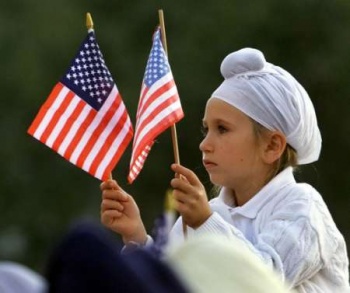 I waited a few days. The title may be sacrilegious, but bear with me and let me explain.
I waited a few days. The title may be sacrilegious, but bear with me and let me explain.
Undoubtedly, for the lives lost in the World Trade Center, for victims such as Balbir Singh Sodhi, for the innocents and “collateral damage” dehumanized and murdered in the hundreds of thousands (and rising) in Iraq and Afghanistan, and to the regime that invokes the “War on Terror” that has led to unethical detention, the promotion of anti-humanist values such as torture (whether conducted in the US or contracted out to other governments), the erosion of that most “American” of constitutional values (i.e. civil liberties enshrined in the Bill of Rights) – September 11, 2011 mattered and will continue to matter. Although, some analysts are even now wondering if it will matter to the future of America.
What I am writing about are the experiences of a Sikh-American.
The narrative in our community goes as following. The world changed on September 11, 2011 (again, that most American quality – to believe that the ‘world’ changed for an event that only occurred in the US). Then, we as Sikhs were attacked “twice” – “double victims”, because as one Sikh civil rights group, SALDEF, writes “[first we were attacked] as Americans and again by those who wished to divide our country based on religion and ethnicity.”
I understand the storyline and it makes sense. But there is something that rankles me here. It is the arrogance of the younger generation.
I write this to try to bring out the actual continuities of the Sikh-American experience and why with a proper scope beyond ‘now-ism’, we can see that while an exacerbation may have occurred, much still remained the same.
I focus on the two most important continuities, despite claims of ‘revolution’ – hate-influenced violence and our institutions.
Today we remember twenty seven years since June 1984.
We remember twenty seven years since Indira Gandhi sent the Indian Army tanks and artillery to the Darbar Sahib Complex and forty one Gurdwaras across Punjab on the shaheedpurab of Guru Arjan Dev Ji.
We remember twenty seven years since bodies lined the hot marble of the parkarma. Though Government reports indicate 493 civilian deaths and 83 army casualties, eyewitness accounts suggest the numbers were much higher since 10,000 pilgrims and 1300 workers were unable to flee the Darbar Sahib complex on this day.
We remember twenty seven years since books, manuscripts and other documents have been reported missing from the Sikh Reference Library numbering 10,534. The library which was intact on June 6th had been burnt down by June 14th. In April 2004, many of these writings, which included handwritten manuscripts were reported to be in the hands of the Union Government where they remain today.
We remember twenty seven years since the events that spurred the November 1984 pogroms and the government lead counter-insurgency in Punjab which left a generation of 25,000 missing.
We remember twenty seven years since Sikh women (and men) learned too well that coercion does not just come from tanks and artillery – that sexual violence can be a systematic and deliberate weapon of the State.
We remember twenty seven years since Punjab was left a political climate that hid the state’s impending agrarian crisis and its interrelated manifestations of farmer suicides, drug addiction and gendercide, even when reports as early as the 1985 Johl Report warned that the farming sector was faltering and the real need to diversify crops from the standard wheat-paddy rotation.
We remember the impact this had on the Sikh Diaspora, the communities New York, California and Canada, and the tireless nights many of our fathers and mothers spent out, mobilizing themselves even as recent immigrants with young daughters and sons.
We are a community that is well versed in Remembrance.
Our mothers and grandmothers would be proud. If we take a moment to pause, we’ll see the amazing mobilization that is occurring in the diaspora around Sikh women’s issues, particularly by youth. I’m not quite sure if it is a legit rise in websites or events or whether we are simply paying more attention to the topic. Regardless, it is clear that there are now more forums and platforms for discussion cultivating the need for women (and men!) to come together and address issues affecting Half the Sky. This post will give a round-up of some amazing work that is happening in our community, bringing together our qaum to discuss important issues affecting Sikh women.
 {Kaurista} It is clear that Sikh women, like all women around the world, value an open space to discuss issues that directly impact us. Whether it is conversations about clothes, hair, identity or our activism – there needs to exist a space that is catered to providing Sikh girls and women with a sense of unity. This type of comraderie cannot be understated – it impacts an individual’s self esteem and confidence in a substantial way. With the launch of Kaurista.com and the immediate posting of the link all over Facebook, it is hard not to notice how much support there is for this type of forum. Kaurista provides conversations on six different topics including, Lifestyle, Style & Beauty, Family, Inspiration and Health & Wellness. One of my favourite sections of the website is “Ask Kaurista” where questions related to wanting to marry a sardar, going to prom, or overcoming alcohol abuse are answered. The site is not only aimed at Sikh girls. In fact, it actively includes Sikh men in discussions – and perhaps the hope is that through these types of discussions, Sikh men will value how truly dynamic Sikh women are!
{Kaurista} It is clear that Sikh women, like all women around the world, value an open space to discuss issues that directly impact us. Whether it is conversations about clothes, hair, identity or our activism – there needs to exist a space that is catered to providing Sikh girls and women with a sense of unity. This type of comraderie cannot be understated – it impacts an individual’s self esteem and confidence in a substantial way. With the launch of Kaurista.com and the immediate posting of the link all over Facebook, it is hard not to notice how much support there is for this type of forum. Kaurista provides conversations on six different topics including, Lifestyle, Style & Beauty, Family, Inspiration and Health & Wellness. One of my favourite sections of the website is “Ask Kaurista” where questions related to wanting to marry a sardar, going to prom, or overcoming alcohol abuse are answered. The site is not only aimed at Sikh girls. In fact, it actively includes Sikh men in discussions – and perhaps the hope is that through these types of discussions, Sikh men will value how truly dynamic Sikh women are!
{HERSTORY}
Guest blogged by resistsingh
March 23rd, 2011 marked the Anniversary of the Martyrdom of Shaheed Bhagat Singh.
Bhagat Singh is a legend in many circles, a man who gave his life to secure the freedom of India from Colonial Rule. Today, many celebrate his bravery and he has become somewhat of an icon. Unfortunately, like other popular revolutionaries, such as Che Guevera the content of his revolution is lost.
Like the many oppressive systems we face everyday, our identity is consistently a target – a means to keep our community impotent, by robbing us of our history, our motivation and association to revolution and social justice. With that in mind, we should always be aware of the ideologies, the motivations and the history behind those we celebrate. Bhagat Singh is no different.
So today, we share a quote with you all, from the Final Petition of Bhagat Singh before his death, one that eloquently describes his resistance to Imperialist and Capitalist ideology and one that we should hold to our hearts as we celebrate his life. As injustice continues to prevail, the greatest honour to the shaheedi of our ancestors is to understand their struggle, today.
“Let us declare that the state of war does exist and shall exist so long as the Indian toiling masses and the natural resources are being exploited by a handful of parasites. They may be purely British Capitalist or mixed British and Indian or even purely Indian. ” – Bhagat Singh
Guest blogged by Preserve Architectural Heritage
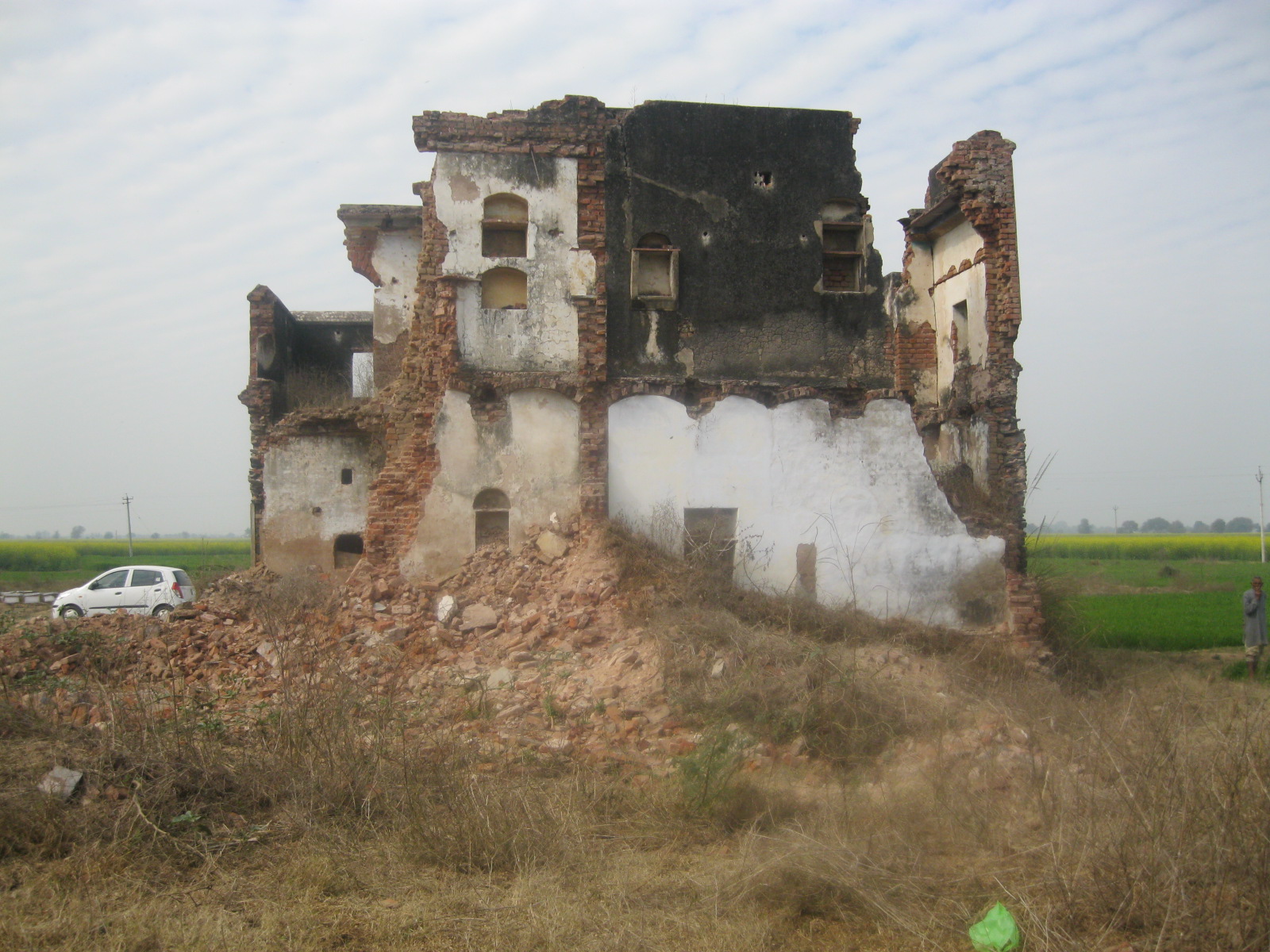 What: discovery of two sites linked to 1984: (1) Hondh Chillar, discovered January 2011. (2) Pataudi, discovered Februrary 2011. Both are in Haryana. Excerpts from Press Releases from Sikhs for Justice reveal that 32 men, women, and children were brutally tortured and killed in Hondh Chillar and 17 in Pataudi.
What: discovery of two sites linked to 1984: (1) Hondh Chillar, discovered January 2011. (2) Pataudi, discovered Februrary 2011. Both are in Haryana. Excerpts from Press Releases from Sikhs for Justice reveal that 32 men, women, and children were brutally tortured and killed in Hondh Chillar and 17 in Pataudi.
Why is this discovery important: So far all the investigation into the violence of 1984 has been done via interviews, eyewitness accounts, judicial commissions, and lawsuits. For the first time, we have living evidence of the genocide: the buildings speak for themselves. Though there are thousands of names on the ever-growing list of those killed in 1984, many of us have very little connection to those names since we don’t personally know the families. Even if some of us know or are related to survivors of the violence, it’s difficult and painful to have those individuals recollect and narrate their memories and experience.
Those of us with no familial connection to Operation Bluestar, those of us who were too young to remember, or were not born when this genocide tookplace now have a physical, tangible, alive, and direct relationship to this significant period of Sikh history through these sites. Since memory of any tragic event is intrinsically linked to physical location[s], it is absolutely crucial that we realize the value of Hondh Chillar and Pataudi as sites that provide us with a direct link to the memory of 1984. They are living sites, open for everyone to access and connect with. They are silent victims, that, just like the human victims of 1984, represent a crucial moment from the recent Sikh past.
Did you know the names?
When our elders don’t know, who will teach the kids?

A new film, by Turbanology filmmaker Jay Singh-Sohal, discusses the presence of Sikhs in the World Wars. Sikhs at War is a free online educational short-film exploring one young person’s journey to discover the invaluable contribution made by his community during the First World War. This documentary has been made specifically with young people in mind. Educators can use the film as a resource to find out more about Sikhs who fought during both World Wars for Great Britain.
From their simple village life in the Panjab regions of modern day India and Pakistan, the Sikhs volunteered in their thousands to fight for Britain. During the Great War their numbers rose from 35,000 at the beginning of 1915 after the crisis in Europe turned into War, to more than 100,000 who were in active service by the time it ended in 1918.
The Sikhs formed 20% of the British Indian Army in action despite being only 2% of the population of India. They fought on all fronts in Europe, from Turkey and in Africa to the fields of Flanders. Their bravery is legendary – of the 22 Military Crosses awarded for conspicuous gallantry to Indians during the conflict 14 were rewarded to Sikh soldiers.
But for the thousands that left their homelands to join the fighting many did not return. During both the Great War (1914-18) and World War Two (1939-45) Sikh soldiers killed in action numbered 83,005 with 109,045 more wounded. One again despite being a minority in British India.
Gone are the days of great public intellectuals in the Punjabi tradition. Whither is our Sirdar Kapur Singh to give intellectual insights, analysis, and voice to the problems of Punjab?
In contemporary Punjab, when crooks rule the halls of power in Chandigarh or even the SGPC offices in Amritsar have become the dens of thieves, we turn to another. For many in Punjab, that has become Babbu Mann.
It was Babbu Mann that caused a storm by telling the truth by merely stating that – while there was one Baba Nanak that on foot became the talk of the world, today’s so-called Babay drive around in fancy cars with red lights attached to the top (as VIPs).
Here at a recent concert at Wembley Stadium, Professor Babbu Mann corrects one of the Indian nationalists’ lies – that of Lala Lajpat Rai.
Lala Lajpat Rai is usually remembered as a ‘freedom fighter’ during struggle against British colonialism. Websites usually laud him in the following way:
In 1928, British Government decided to send Simon Commission to India to discuss constitutional reforms. The Commission had no Indian member. This greatly angered Indians. In 1929, when the Commisssion came to India there were protests all over India. Lala Lajpat Rai himself led one such procession against Simon Commission. While the procession was peaceful, British Government brutally lathicharged the procession. Lala Lajpat Rai received severe head injuries and died on November17, 1928 [link]
As Professor Mann suggests, read your history and learn how this so-called great “hero” died of a heart attack later and was hardly the martyr of Indian legend.

For the video of ‘Ik Baba Nanak Si’ mentioned earlier in the article, click fold and watch below.
 I was really moved by this audio essay from Cecilia Muñoz titled “A Little Outrage Can Take You a Long Way” on NPR’s This I Believe segment.
I was really moved by this audio essay from Cecilia Muñoz titled “A Little Outrage Can Take You a Long Way” on NPR’s This I Believe segment.
In her reflection on activism, I connected with the statement about defeats outweighing victories, and how it motivates her to continue her work. Like many of the TLH readers, I too take time out my schedule for service activities. And after serving 100 or so meals at a homeless shelter, I go home feeling good about myself and the good deed I had done. Unlike Muñoz, I don’t stay awake thinking of the 100 or so people who were turned away that day at the shelter, or those who wouldn’t have a place to sleep that night. Maybe this is what separates me from real activists. To me, service has become an event or an activity – for an activist, service is a part of their life…part of who they are. They are constantly looking for ways to serve.
And I agree with Muñoz, “a little outrage can take you a long way.”
Although I don’t believe Guru Nanak was motivated by anger, I do believe he was outraged. Outraged by a society complacent with the rigid caste hierarchy, outraged at the imbalance of justice, and outraged by the barbaric methods of the State to suppress a minority. You can almost hear the outrage, when Guru Sahib describes the horrific events of Babar’s invasion:
25 years ago history was made for several different reasons. Today, as we reflect on the invasion, on the assassination, and on the massacres, we come across multiple news articles which provide information and commentary on the events of that year. I wanted to take the time to document and highlight these articles as they’re worthy reads in providing information to readers around the world. I encourage you to read these pieces – they are vital to our understanding and they will inform Sikhs and non-Sikhs alike about events in our history.
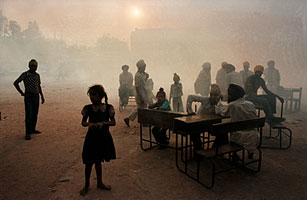 1. TIME magazine featured an article titled, “India’s 1984 Anti-Sikh Riots: Waiting for Justice.” Our readers have previously argued against the use of the word “riot” and suggested that “genocide” is the more fitting description of what happened. Regardless, this is an important article which discusses the often silent victims of 1984 – the widows and their children and the impact the events (and lack of justice) has had on their future.
1. TIME magazine featured an article titled, “India’s 1984 Anti-Sikh Riots: Waiting for Justice.” Our readers have previously argued against the use of the word “riot” and suggested that “genocide” is the more fitting description of what happened. Regardless, this is an important article which discusses the often silent victims of 1984 – the widows and their children and the impact the events (and lack of justice) has had on their future.
The widows’ colony in Tilak Vihar is a cheaply built and neglected cluster of homes, which were given by the government to hundreds of women and their children who survived what have become known as the anti-Sikh riots of 1984. But as the grim event’s 25th anniversary nears at the end of this month, crime, addiction and prostitution have taken root in what was supposed to be a survivors’ safe haven. Residents say this is because of the damage to the mental health of children who were witness to their parents’ and siblings’ murders and who grew up in impoverished homes and weren’t given any medical help — physical or mental — for their problems. [link]
Of note: for the 25th anniversary of the event, advertisements by Ensaaf — showing an old woman wiping away her tears, with the words, “25 years ago, our loved ones were burned alive in front of our eyes,” and in the next line, “Why has India, the world’s largest democracy, denied us justice?” — are scheduled for the month of November in the San Francisco Bay Area’s transit system!
Guest blogged by: Amol Singh
Harinder Singh Jinda and Sukhdev Singh Sukha were hanged to death in Pune Jail for the assassination of General Arun Vaidya, the architect of Operation Blue Star. In the wake of their impending hangings, Sukha and Jinda sent an open letter to the President of India in which they documented their justifications for Sikh militancy and demonstrated how their actions were placed inside a global sphere of justice and necessity.
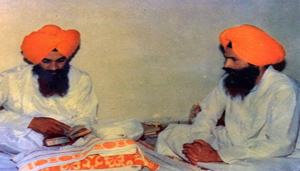 Sukha & Jinda’s letter contextualized Sikh militancy inside of a broader sphere of global defiance against outdated and arbitrary power structures.
Sukha & Jinda’s letter contextualized Sikh militancy inside of a broader sphere of global defiance against outdated and arbitrary power structures.
When nations wake up, even history begins to shiver. During such momentous moments a Banda Bahadur bids farewell to his peace-dwelling and destroys a State of oppression like Sirhind, a Che Guevera turns down a ministership of Cuba, loads a gun on his breast and entrenches against the enemies in the forest of Bolivia, a Nelson Mendela rejects the ideology of apartheid and prefers to spend his life in a dark prison cell.
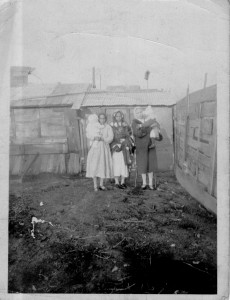 Mill Town Pioneers. Most of Canada’s early Sikh immigrants found work in lumber mills throughout the Pacific Northwest.
Mill Town Pioneers. Most of Canada’s early Sikh immigrants found work in lumber mills throughout the Pacific Northwest.



